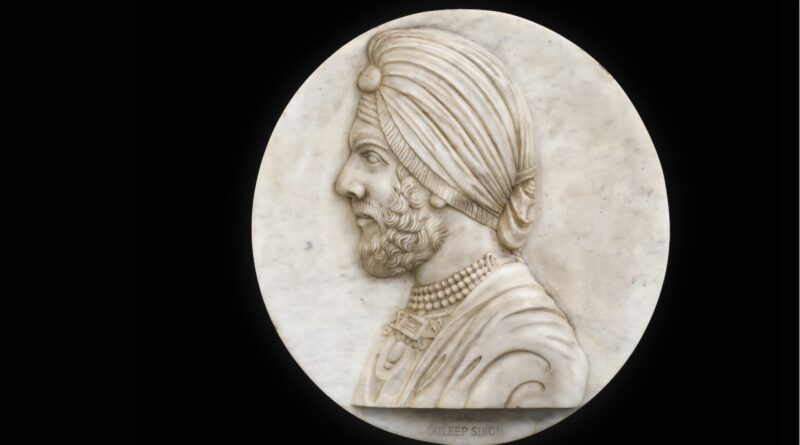Maharajah Duleep Singh bas relief in sale
 A white marble plaque with a bas-relief portrait of the Maharajah Duleep Singh, the last ruler of the Punjab and great friend of Queen Victoria, will be offered in the Summer Fine Sale at Tennants Auctioneers in North Yorkshire on July 15, with an estimate of £4,000-£6,000.
A white marble plaque with a bas-relief portrait of the Maharajah Duleep Singh, the last ruler of the Punjab and great friend of Queen Victoria, will be offered in the Summer Fine Sale at Tennants Auctioneers in North Yorkshire on July 15, with an estimate of £4,000-£6,000.
The portrait likeness was taken from a famous bust of Singh, sculpted in Rome by John Gibson whilst the Maharajah was visiting the city with the Prince of Wales in 1857, during the happiest part of his troubled life.

Born in 1838 in Lahore, in what is now Pakistan, Duleep Singh (1838-1893) was born into the affluent court of the Sikh Kingdom, son of Maharajah Ranjit Singh, the first Sikh Maharaja of the Punjab and Sikh Empire. Following the death of his father, Duleep Singh was declared Maharaja at just five years old. However, the British East India Company exploited the unstable kingdom, and after two wars took control of the Punjab when Singh was thirteen years old. The legendary Koh-i-Nûr diamond was surrendered to the British as a symbol of conquest, and Singh signed the Treaty of Lahore, giving up his sovereignty.
Singh was moved from the Punjab to Mussoorie and placed in the care of a Scottish surgeon Sir John Spencer Login of the East India Company, where he converted to Christianity and played cricket in an effort to become an archetypal English gentleman. He was moved to England in 1854, and his transcendence into the upper echelons of British society began. Rubbing shoulders with royalty and aristocracy, he lived on a pension of £25,000 a year provided he ‘remain obedient to the British Government’.
Queen Victoria was enraptured by Singh. “[He is] extremely handsome and speaks English perfectly… and has a pretty, graceful and dignified manner,” uttered Queen Victorian upon meeting Singh in 1854. By this time, Queen Victoria often wore the Koh-i-Nûr diamond symbolising British imperial power, so it was with irony that Victoria remarked, “I always feel so much for these poor deposed Indian princes”.
Despite Queen Victoria’s attempts at matchmaking Singh with other outcast Indian princesses, he married Bamba Muller, daughter of a Coptic Christian Ethiopian and a German Merchant, whom he had met in Cairo. The pair lived on a vast and lavish shooting estate, Elvenden in Norfolk, and Singh would frequently visit Victoria at Osborne and Windsor Castle. Indeed, the Queen became godmother to three of Singh’s children.
His later years were restless as he increasingly became disaffected with the British and reverted back to Sikhism. Despite best efforts to reclaim the Punjab, he died in Paris in 1893 after suffering a stroke, but not without reconciling with Queen Victoria who pardoned him for his hostility towards the British Government in his later years.

